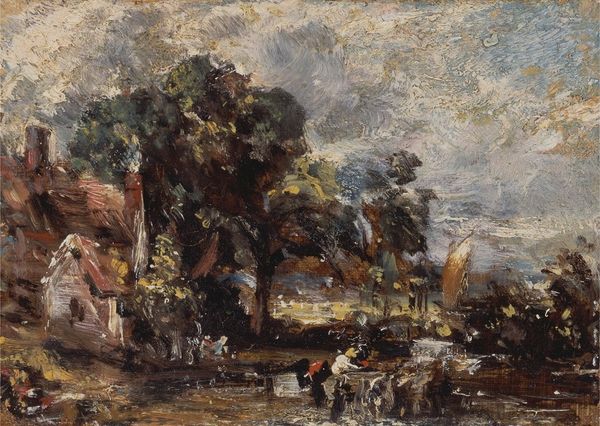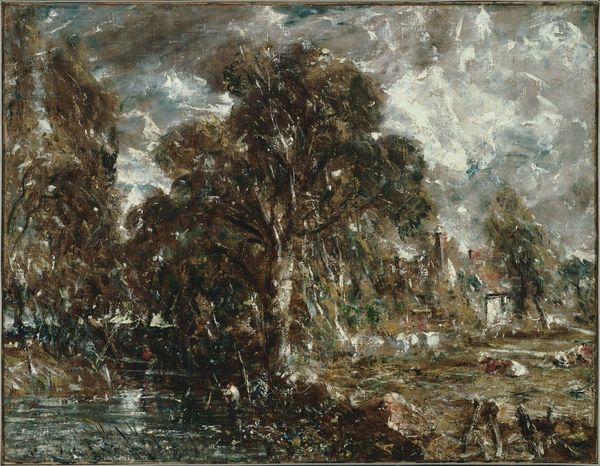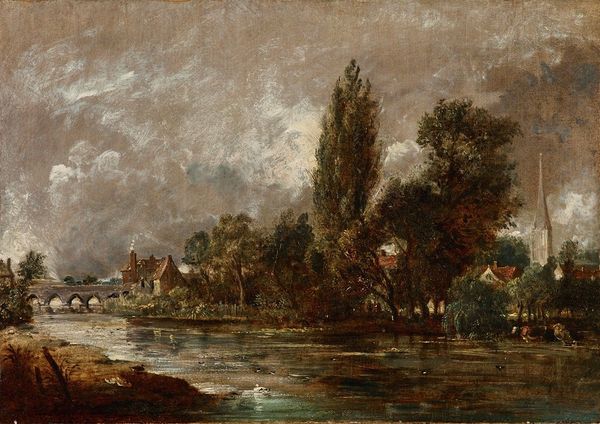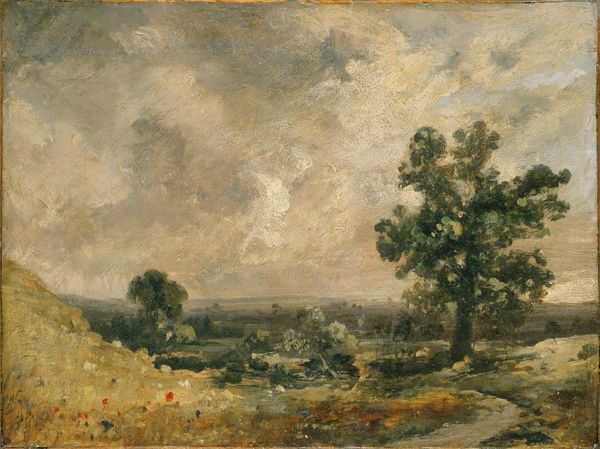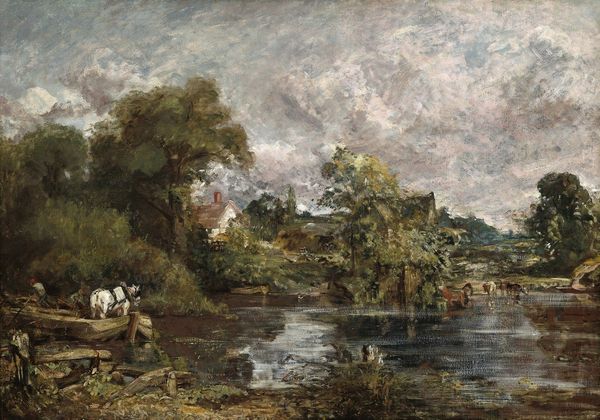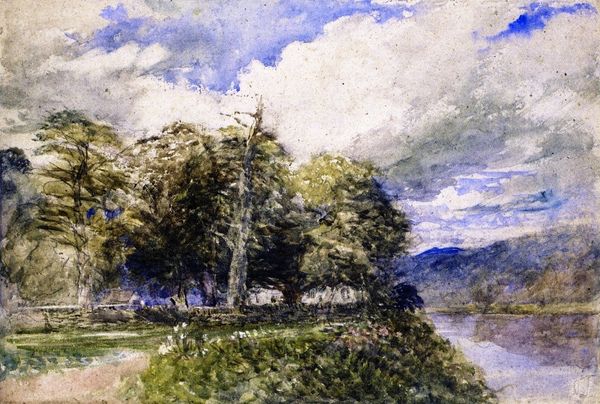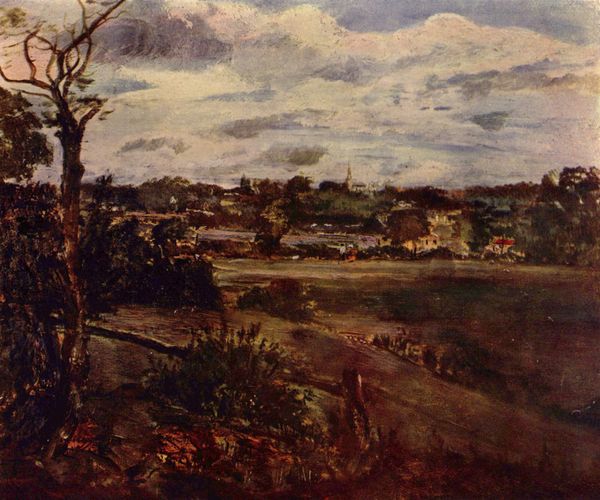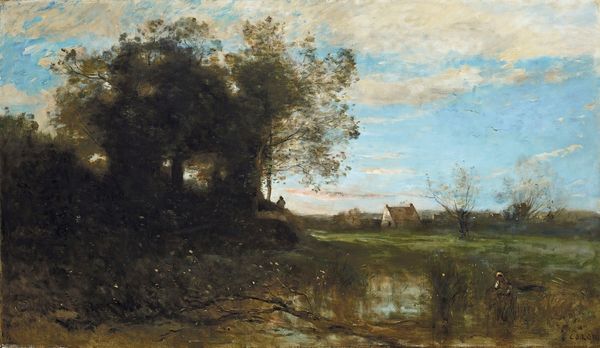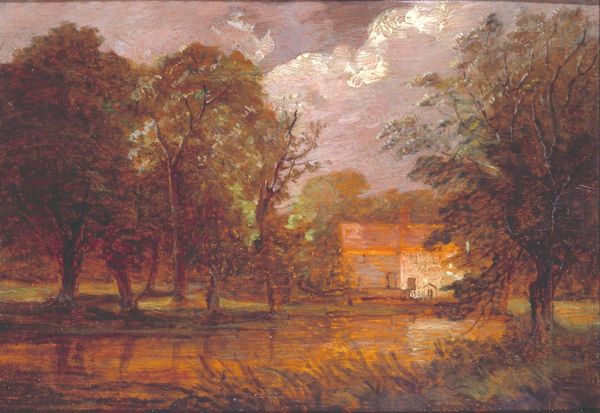
Dimensions: 25.4 x 34.9 cm
Copyright: Public domain
Curator: John Constable's "Scene on a River 1," painted in 1837 using oil on, what looks like, a modestly sized canvas. What strikes you immediately about this landscape, Editor? Editor: The river. How Constable renders the reflected light. The scene vibrates with that Romantic idea of nature's sublime indifference. It’s calming, yet has a palpable emotional tension. Curator: It’s fascinating how Constable used the plein-air technique. These works aren’t finished exhibition pieces; instead, we see real-time visual data that contributes significantly to his major studio works. The way the river appears in his finished paintings stems directly from his observational efforts and interactions at the location, reflecting not only technical aptitude, but economic decisions to document real life to make convincing "real" pictures. Editor: I find that thought intriguing, though my connection goes to the light playing off the water’s surface. The brushwork seems almost reckless, gestural, capturing fleeting atmospheric conditions and the general, vibrating quality of nature's forms and reflections. To think of those strokes being based on field data, almost. Amazing. Curator: Exactly. His "impressions" become these very material studies in pigment. But notice the larger historical implications: Here, Constable isn't necessarily crafting a purely aesthetic experience, but one rooted in tangible social circumstances. I suggest Constable documents the impact of growing industry and agricultural practices in the countryside. Labor and materiality define this work, even through Constable's "Romantic" lens. Editor: Maybe. It's like memory reassembled. He’s sharing how he felt in that space. Whether he was thinking about industry, labor, capitalism—I imagine, while actually painting, that stuff all fades, transforms, into the moment. It’s interesting that you make art political immediately; but that does impact how each viewer sees and interprets something that makes us feel this way. Curator: Ultimately, it showcases the artist’s labour – his keen observation of nature, and translation of social transformations. Editor: For me, its truth lives in the immediacy. Thank you, John Constable, for sharing that river moment with me—it still speaks powerfully almost two centuries later.
Comments
No comments
Be the first to comment and join the conversation on the ultimate creative platform.
